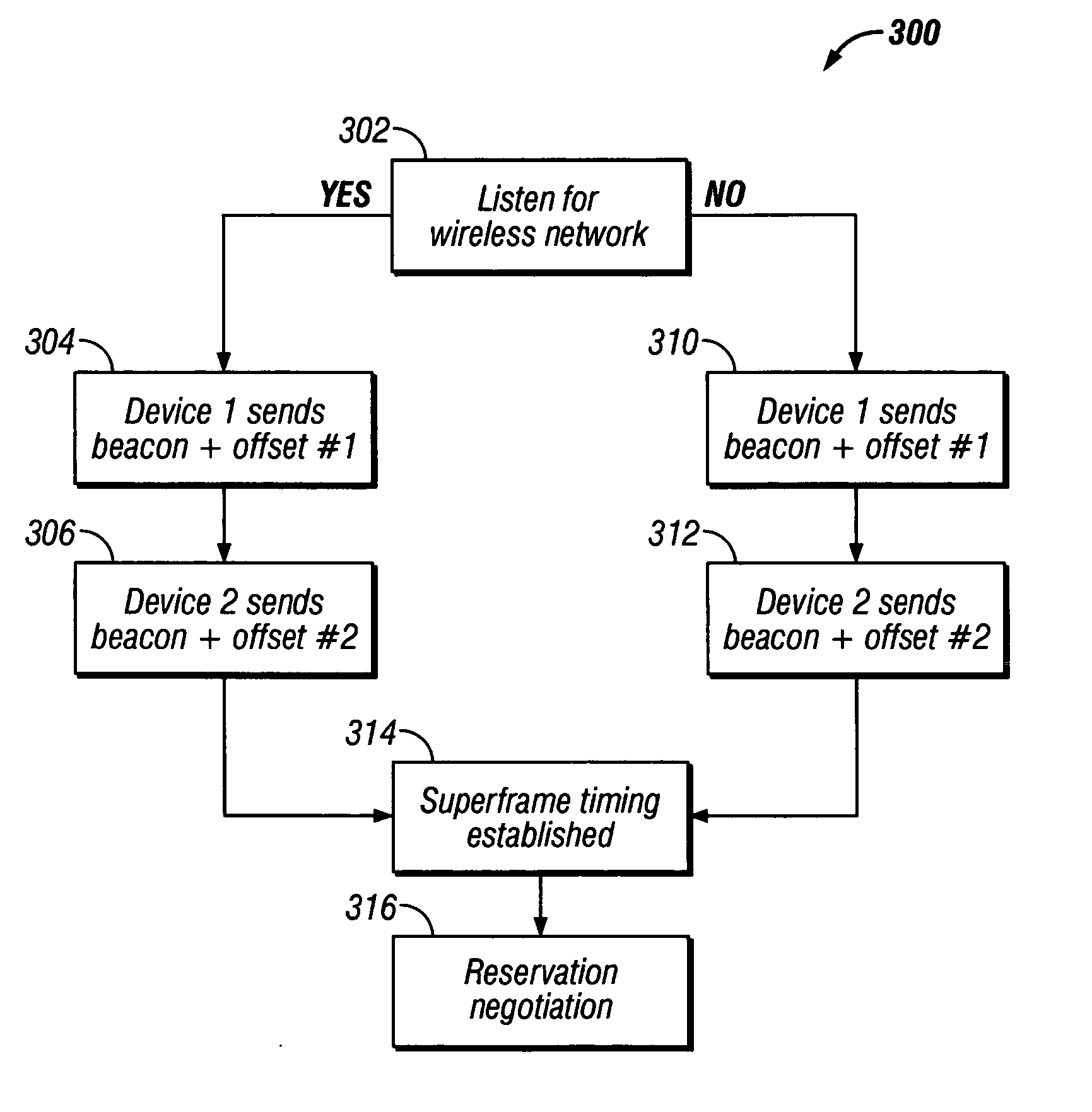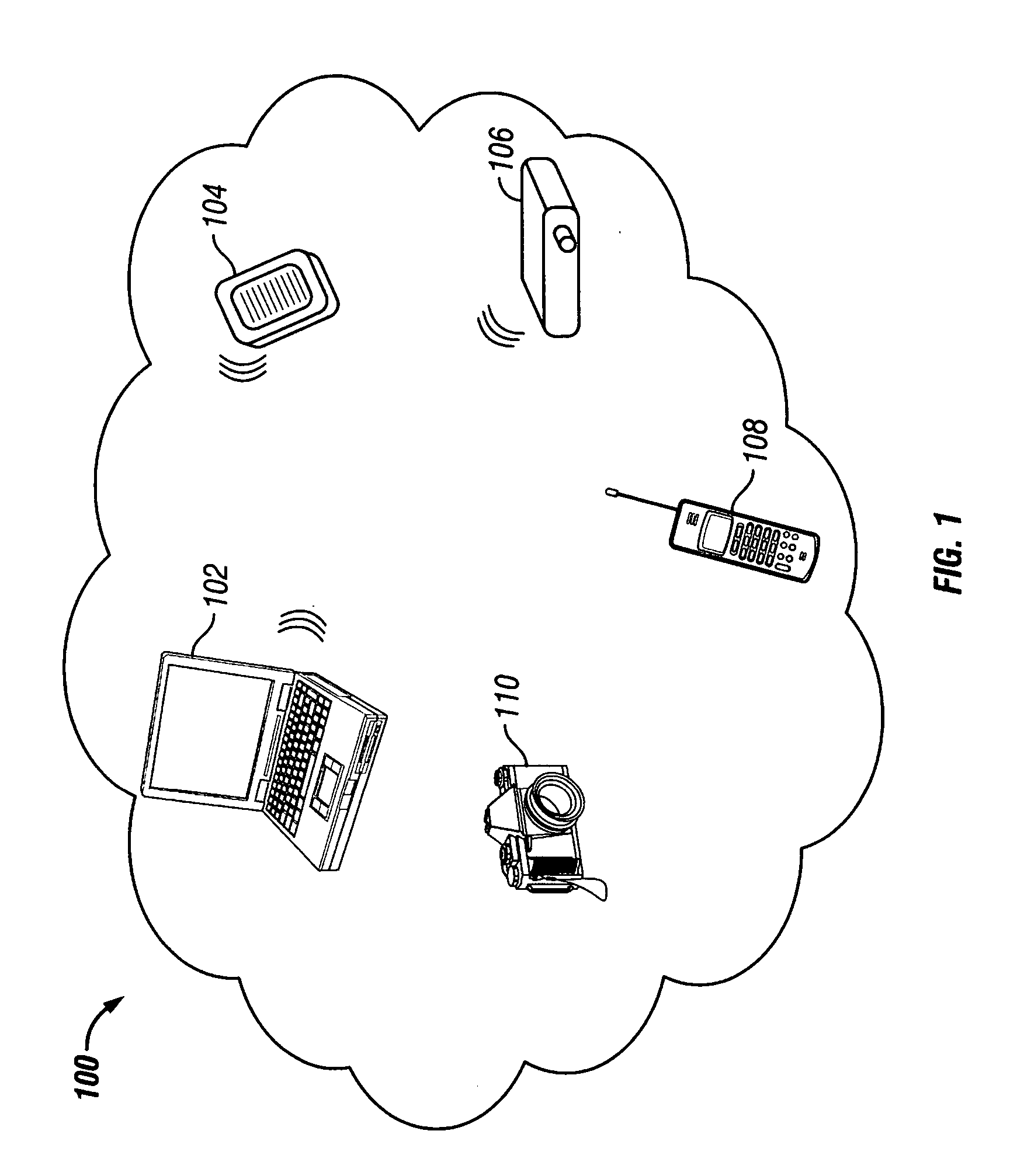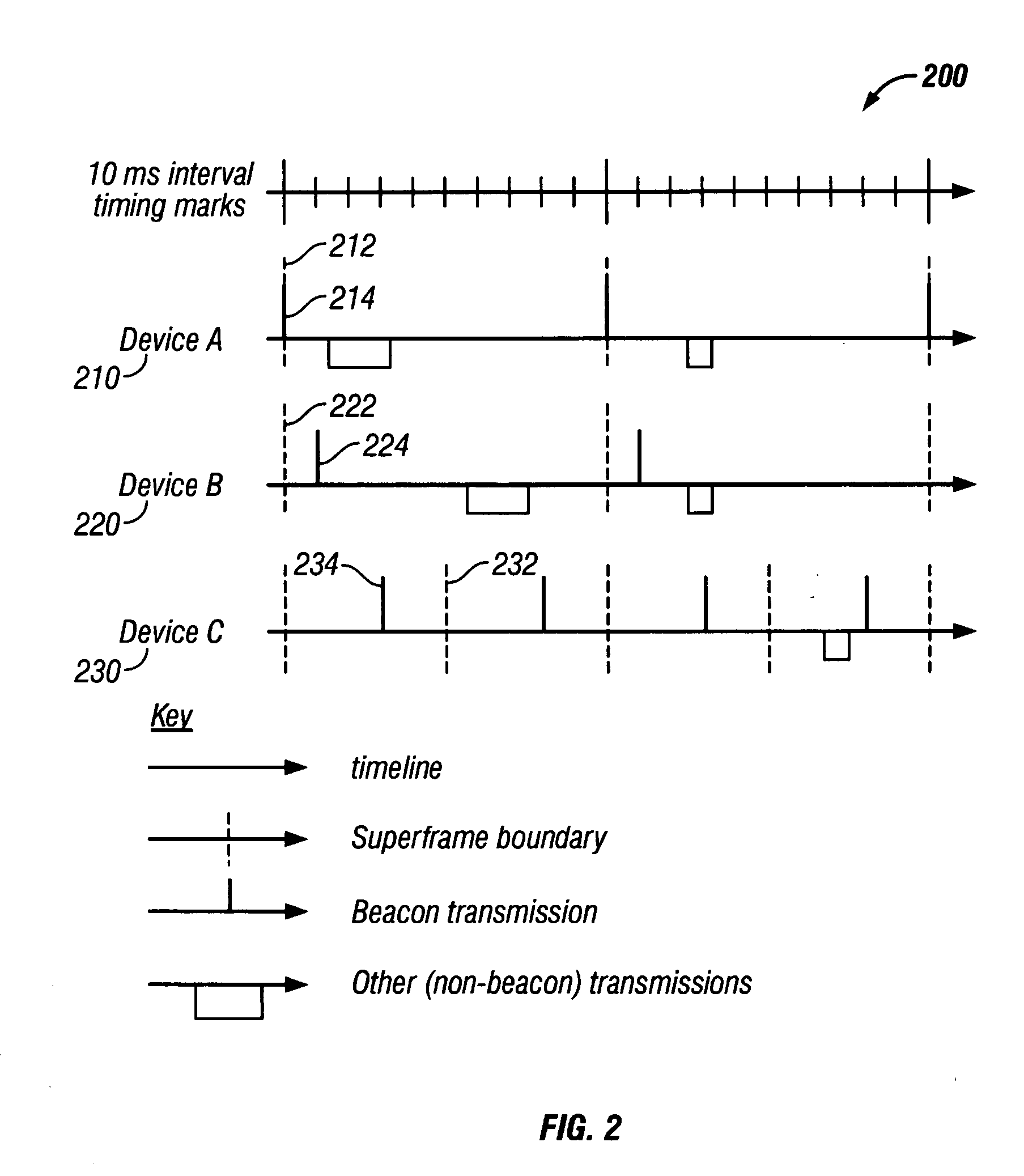Offset beacon for distributed management and control of wireless networks
a wireless network and distributed management technology, applied in data switching networks, high-level techniques, wireless commuication services, etc., can solve the problems of not providing desirable properties and unreliable wireless networks, and achieve the effects of robust service quality, rapid change of network configuration, and good power management qualities
- Summary
- Abstract
- Description
- Claims
- Application Information
AI Technical Summary
Benefits of technology
Problems solved by technology
Method used
Image
Examples
Embodiment Construction
[0013] A wireless network can contain any assortment of devices. For example in FIG. 1, a wireless network 100 is illustrated. There are no physical connections between any of the devices. For these networks to be dynamic, new devices should be able to enter the network and communicate with existing devices. For example, a laptop computer 102, a personal digital assistant 104, a projector 106, a cell phone 108 or a camera 110 are just some of the devices that might enter into the wireless network. In each instance there could arise a need to communicate between the devices. For example, pictures from the camera 110 could be transmitted to the laptop 102. From there, the photos could be retransmitted to the projector 106. A cell phone 108 might receive a cal and automatically store a voice mail on the lap top 102. No matter the combination or circumstance, there is a need that the communication be orderly. Yet, in this network 100 there is no central controller to coordinate the comm...
PUM
 Login to View More
Login to View More Abstract
Description
Claims
Application Information
 Login to View More
Login to View More - R&D
- Intellectual Property
- Life Sciences
- Materials
- Tech Scout
- Unparalleled Data Quality
- Higher Quality Content
- 60% Fewer Hallucinations
Browse by: Latest US Patents, China's latest patents, Technical Efficacy Thesaurus, Application Domain, Technology Topic, Popular Technical Reports.
© 2025 PatSnap. All rights reserved.Legal|Privacy policy|Modern Slavery Act Transparency Statement|Sitemap|About US| Contact US: help@patsnap.com



